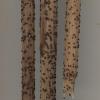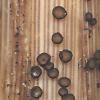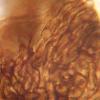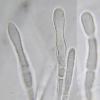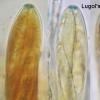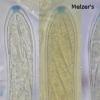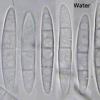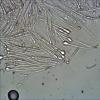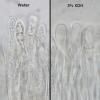
20-12-2025 23:08
Patrice TANCHAUDBonsoir, récolte sur sol sablonneux dans l'arri�

21-12-2025 09:32
Hello.A tiny ascomycete found embedded in wood in

20-12-2025 15:47
Mirek GrycHi.These grew on pine wood that was heavily covere

18-12-2025 21:17
Pol DebaenstThe identification took me to Byssonectria deformi

15-12-2025 07:09
 Danny Newman
Danny Newman
indet. Rutstroemiaceae sp. on unk. fallen leavesMc

19-12-2025 10:10
Patrice TANCHAUDBonjour, récolte réalisée en milieu dunaire, a

18-12-2025 17:23
 Bruno Coué
Bruno Coué
Bonjour,je serais heureux d'avoir votre avis sur c
 Hello,
Hello,This collection appears to be the same species as one presented by Chris Yeates five years ago (http://www.ascofrance.fr/search_forum/24157) and tentatively identified as Micropeziza karstenii. Mine was growing on dead culms of Phalaris arundinacea completely submerged in water. Many of the ascomata were immature, so perhaps the ascospores would not be discharged until the water level went down and the ascomata were exposed to the air.
I have not yet been able to find any records of this species from North America and would like to be more certain of the identification before adding the record to our biological survey. Any comments would be appreciated.
Dave

this requires a living turgescent ascus in order to see if the spores are septate already inside the living asci. Judging from the appearance of the spores I suspect so, which would mean that it can hardly be a Micropeziza. Members of that genus I only know as having at maturity non-septate spores, i.e., spores are ejected when non-septate. Moreover, M. karstenii/poae/cornea has a high lipid content, unlike yours.
In Micropeziza the paraphyses are apically often swollen, and the VBs inside are more or less restricted to this inflated part. In your species the VBs are very elongate and reach far down. The spores are also distinctly larger than in that species.
What genus this belongs I cannot tell. Niptera could be a better alternative. You should test KOH whether it causes a yellow reaction at the moment when it comes in contact with the VBs. Niptera often shows this reaction.
Zotto

Thank you for your valued observations. I was afraid the identification was too easy! The fungus is very abundant in it's habitat so I will work further on getting a name for it.
Dave

david, did you restudy the specimen, particularly regarding a possible KOH-reaction?
Zotto

I tried applying 3% KOH to a water mount but did not see any fleeting yellow colour. The specimen is now dried and the paraphyses contain only a finely granular content, quite different from the fresh condition. The KOH instantly clears the cell, but without any colour changes.
The fungus is interesting enough that I am planning to revisit the locality and collect more, hopefully in a more mature condition. Unfortunately this requires a 2-hour car trip from home followed by two more hours in a canoe. Only another mycologist could appreciate such an obsession!
Dave

The photos aren't very good, but do show that amount of swelling. There is some obscure yellow colour in the KOH mount, but I don't think this is the reaction your are describing Zotto.
If the newly collected material is more mature perhaps we can get a culture and some useful sequences from it.
Dave

Another difference is the high lipid content in excelsior vs. a very low content in David's fungus.
When you go to Dennis 1978 the spores of N. excelsior measure 50-80 x 3-4 µm.
From David's scale I measure 28-33 x 4.7-5.2 µm. David, did you also measure the spores?
Species Fungorum does not accept Niptera but Belonium, an antiquated opinion. This index is not at all up to date in every case, although it is continuously improved, as far as I know by one person concerning all fungi (!).
An unpublished ITS sequence of M. excelsior exists which yields Mollisia minutella as closest match (94%). But I must admit that no true Niptera (s.str.) sequence exists in GenBank.
Zotto

By the way, your photos are splendid!!

